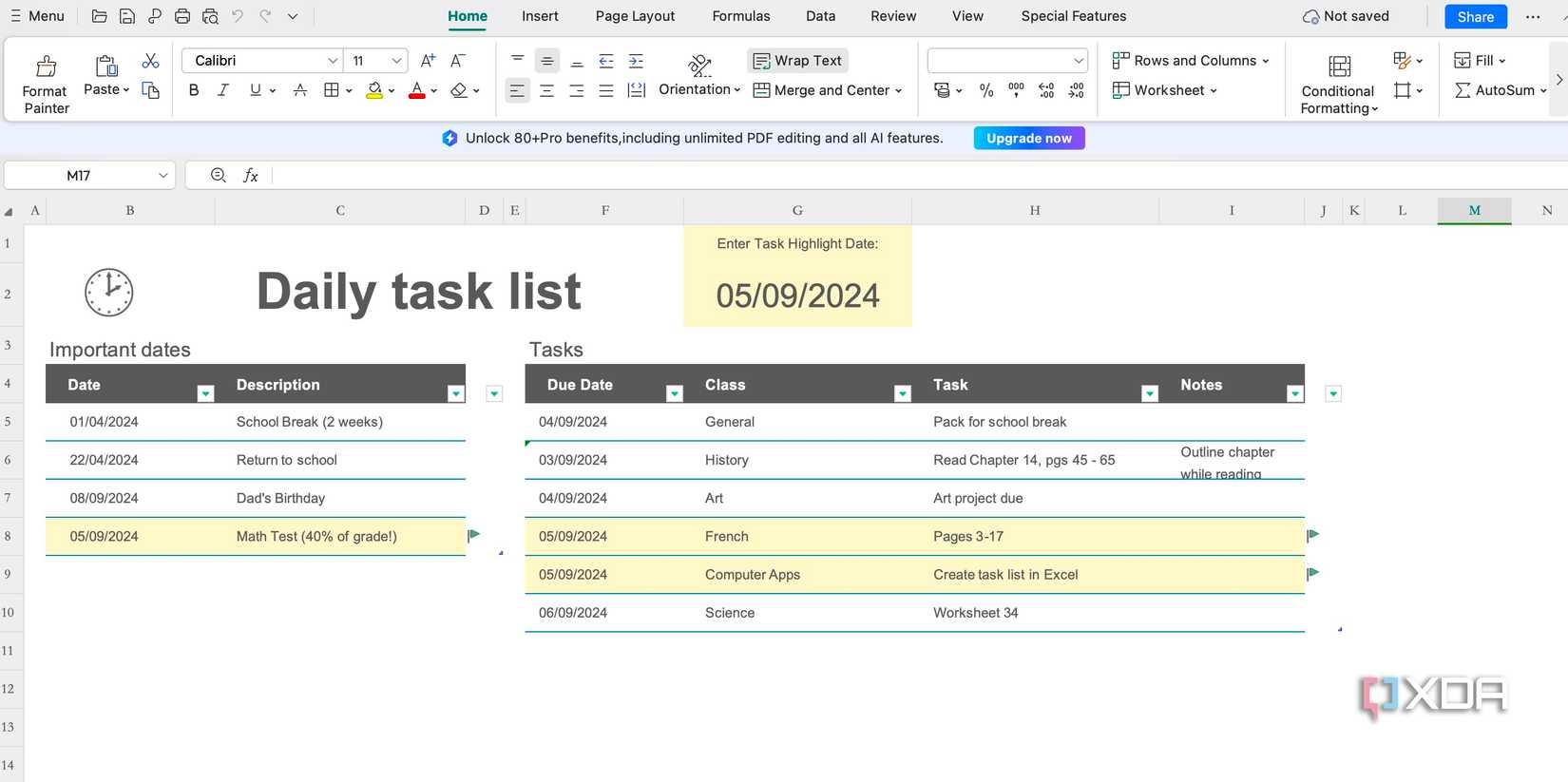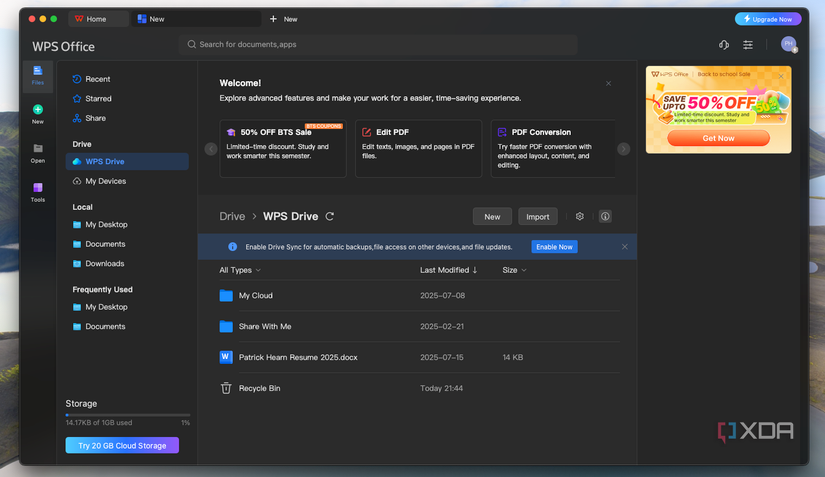Over the past six months, I’ve transitioned almost every piece of software I use from a commercial platform to an open-source alternative. Microsoft Office was one of the first to go, with WPS Office taking its place. At first, it worked great. It replaced all the functionality of MS Word with a familiar interface and made switching between documents and spreadsheets as easy as clicking a button. And then things started to go downhill.
Over time, WPS Office has slowed down and demanded more system resources. Even opening a file took an unacceptable amount of time, and if it were a larger file — like a novel-length manuscript filled with tracked changes — scrolling through the pages was about as smooth as a ride down a hiking trail. Combine that with WPS Office’s relentless pushing of its more advanced (read: paid) features, and I found myself running out of patience. When I click on a document, I want it to open. I don’t want it to prompt me to pay for something.
So I ditched WPS Office and returned to an old favorite in hopes it would work better: LibreOffice. Surprisingly, it did, despite how I remember the application from my university days. Here’s what I learned.
LibreOffice is fully open-source and offers better privacy
WPS Office is not
LibreOffice is completely free to use and download. Yes, there is a small fee if you try to get it from the App Store or a similar platform, but you can also download it directly from the LibreOffice website without spending a dime. WPS Office offers a free tier, but that includes ads, collects a surprising amount of user data, and locks premium features behind subscriptions. While WPS Office might have slightly more modern tools (like AI), it is hardly worth the tradeoff.
LibreOffice is the better choice for anyone who values privacy and doesn’t want to provide companies and corporations with free data.
The Open Document Format is better for long-term reliability
And LibreOffice actually saves files to your machine
One of the first things I noticed about WPS Office is that all my files defaulted to a cloud drive, not my laptop. While there is nothing inherently wrong with cloud storage, it didn’t try to send documents to iCloud. Instead, it sent them to WPS Drive and made it a much greater pain to find those files later. LibreOffice defaults to saving files in my Downloads folder. Not exactly the target, but easy enough to change, and not wildly egregious.
More than that, LibreOffice is compatible with a wide variety of file formats, but defaults to the Open Document Format. This format is recognized by the International Organization for Standardization (ISO) and is compatible with almost every word processor out there, ensuring the files will still be available and accessible years down the line. WPS Office opts for the same file types as MS Word, risking potential vendor lock-in. Sure, the files can be converted and opened, but much of the formatting can be lost in the process.
LibreOffice is easier on my dated hardware
It’s much faster
My experience might be isolated. I’ve seen a lot of discussion around WPS Office’s performance, but it didn’t yield those results on my machine. My laptop isn’t even that old — it’s a 2020 MacBook Pro — but WPS Office bogged down the performance of everything else on the system. On the other hand, LibreOffice runs much more smoothly, even if I have other applications open or I’m in a video call. It’s a breath of fresh air after the slowdown of WPS Office interrupted my flow.
That said, WPS Office does look a lot better
LibreOffice looks like an early Windows relic
If you’re moving away from Microsoft Office, WPS Office is a solid choice. It’s a nearly perfect match for the interface, and everything about it looks much more modern (and so do its features, especially since it has AI capabilities). It’s also better at matching file compatibility with MS Office file types, preserving the layout and format of .docx, .xlsx, and .pptx files in comparison to LibreOffice. I’m not concerned with aesthetics, and there are plenty of ways to make LibreOffice look like Microsoft Office. Ultimately, the better performance wins out. I don’t need AI capabilities in my word processor. I’m a writer; if the day comes that I use AI for my work, I’m out of a job.
Genuine independence and better performance win over a pretty face
Adios, telemetry
I started the process of moving away from corporate-sponsored software because I was tired of my data being used without my consent. WPS Office is just as guilty as Microsoft in that regard, and without anything to make it a better choice (considering MS Office ran better than WPS Office on my machine), there was no reason for me to stay with it. LibreOffice might have the occassional formatting hiccup, but that’s a small price to pay to have more control over my data and to be able to shift seamlessly between applications without my laptop freezing like it’s December and I’ve left a window open.
There’s no perfect solution
LibreOffice has gotten a lot better since the last time I used it, but it’s still not perfect. I’ll stick with it for now, especially since my primary use case is tracking changes throughout documents as I edit. My search will continue for a word processor that fits all of my needs, but so far — and despite testing more than a dozen options — nothing has checked off every box.





